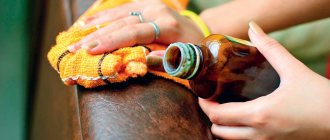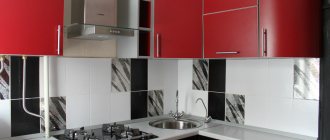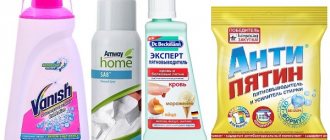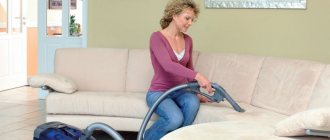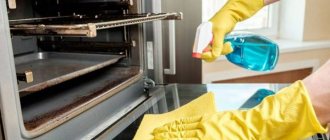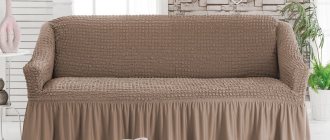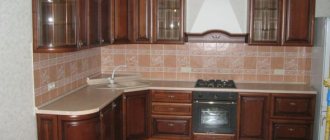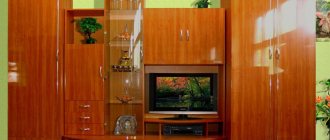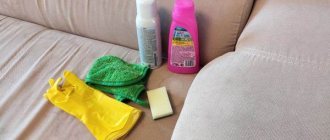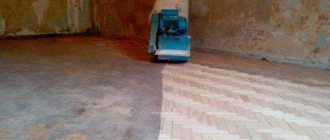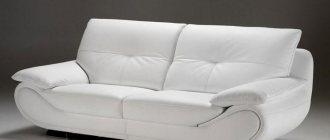- Mustard powder
Keeping the kitchen clean is one of the main tasks of housewives, so the question of how to clean grease from kitchen furniture at home is always relevant. Home and professional remedies will help clean surfaces and restore their freshness. However, in order not to damage the headset, it is important to know what material it is made of and take into account the features of caring for it.
Even the most careful and clean housewife often has traces of grease and soot in her kitchen. General cleaning using household chemicals or folk remedies will help restore the cleanliness and shine of the set.
The article contains useful tips and effective methods that will help remove grease from glossy, plastic and wooden furniture in the kitchen.
Method 1 Hydrogen peroxide + water
APPLICATION: Only for kitchens, splashbacks and countertops made of MDF and chipboard. The product will help not only clean the kitchen of grease and dirt, but also disinfect the areas treated with it.
- It is permissible to clean a wooden kitchen with hydrogen peroxide, but only if it is necessary to remove mold.
CLEANING FREQUENCY: As needed.
INSTRUCTIONS:
Mix these ingredients in a 1:2 ratio, treat the desired areas with the resulting liquid with a rag (it is better to spray the product from a spray bottle).
The choice of method, depending on the facade material
Different surfaces may react differently to the same substance. There are several types of materials from which kitchens are made: MDF, wood, laminated and regular chipboard, plastic, glass.
MDF
The board consists of wood waste and glue. Cleaning options using alcohol can handle dirt in an MDF kitchen. Abrasive substances (soda, salt, mustard) should not be used. Also, do not use a steam generator - it may cause the film to peel off.
Tree
The best for wooden furniture in the kitchen are folk remedies using soda, salt, lemon, mustard powder. Dishwashing liquid is the only household chemical that is allowed for cleaning wooden kitchens. If the wood is polished, you can periodically wipe the facade with raw potatoes. Use the steam generator with caution. There is also a risk of peeling. Use soft, lint-free tools. When cleaning, try to move the rag/sponge along the pattern from top to bottom and wring it out well.
Chipboard
Chipboard is a particle board, for cleaning which methods using vinegar, alcohol, soap and a melamine sponge are suitable.
Laminated chipboard
It is better to clean a glossy surface with soap solutions or the same dish soap.
Plastic
Any of the traditional methods is suitable for washing a plastic kitchen. It is resistant to moisture. But still be careful - it wears off quickly. Plastic will also not tolerate chlorine and polishes with wax.
Glass
A soap solution is ideal for glass. Alcohol-based window cleaners will do an even better job without leaving streaks.
How to clean handles on kitchen cabinets
Don't forget to wash the surfaces of the furniture from grease and dirt and wash the handles.
Cleaning them outside is no problem. But how much dirt accumulates behind, in hard-to-reach places! My cabinets, for example, have handles with such complex grooves that they are not so easy to clean with one hand and a rag.
The problem can be easily solved with an old toothbrush.
Any detergent, for example a slurry, can be made from mustard powder, vinegar and water (by the way, it is also suitable for washing wooden and plastic surfaces), apply with a toothbrush to the handles on all sides, scrub them thoroughly, then rinse with water and dry.
Required Tools
To wash plastic from nicotine deposits, grease, dust and other contaminants, you need to use only soft, gentle products and tools.
To care for plastic panels you will need:
- rubber spatula/hard brush (for processing seams);
- latex gloves;
- ladder;
- sponge (foam rubber or melamine);
- a rag made of cotton or other soft fabric;
- mop with sponge (for washing ceilings and other hard-to-reach places).
Attention! To preserve plastic products for as long as possible, it is recommended to use self-prepared cleaning solutions.
How to clean kitchen furniture from grease
Using household chemicals or improvised means, it is necessary to adhere to a certain sequence of actions so that washing cabinets is as effective as possible and does not take much time and effort. Follow this sequence of actions:
- Wet the cloth with warm water and dampen the surfaces thoroughly.
- Apply your chosen detergent evenly to the furniture.
- Allow the dirt to “turn off” for the required period of time.
- Remove fat deposits using a foam sponge or brush.
- Remove any remaining detergent with a damp cloth.
- Clean surfaces with a sponge.
- If necessary, repeat the manipulations.
If you are using a store-bought product, pay attention to the surfaces for which the chemical is intended when purchasing. Anything that can be used on plastic or MDF can ruin or polish the wood.
Steam cleaner
A steam cleaner (or steam generator) will remove remaining scale or oil traces, congealed grease, as well as fungus and foreign odors. Under the influence of temperature, old grease stains can be washed away. It can be used on all surfaces that are not harmed by moisture: glass, tiles, steel, wood - with caution. After treating the kitchen with a steam generator, it is enough to remove any remaining moisture and dirt with a napkin.
Household chemicals
Typically, when it comes to cleaning, housewives are divided into two camps: those who prefer to use very effective household chemicals, and those who remove stains with folk remedies. If you fall into the first category, this section is for you.
Household chemicals have an undeniable advantage - they act quickly, efficiently and are able to cope with almost all types of contaminants. There are many options for cleaning surfaces: you can buy Shumanit, Mister Muscle, Silit Beng or Amway. The type of product will depend on the type of contamination and the surface on which it forms.
For example, you should not remove old grease from MDF or plastic-based facades with substances containing abrasive particles or chlorine. In such a situation, it is better to use furniture care products.
In general, when working with purchased substances, several recommendations should be followed:
- The first step after purchasing a cleaning product is to carefully read its instructions. It describes the characteristics of its application in great detail.
- Never exceed the specified concentration. This way you risk damaging the surface.
- Use detergent only with rubber gloves. Otherwise, you risk damaging your hands and getting burned.
- Before starting cleaning, it is better to open the window in the kitchen so that the strong smell of substances does not cause dizziness.
When choosing household chemicals, familiarize yourself with the composition and purpose. There are professional substances and compositions for home use. Choose household chemicals that match the material from which the kitchen cabinets are made. For example, plastic and metal surfaces do not tolerate dust cleaning well - they are easily scratched.
Wood products must be washed with liquid products that do not contain chlorine. This can cause white streaks to appear on the tree. These stains are much more difficult to remove from surfaces than grease from wood kitchen cabinets.
Glass surfaces require special attention and should not be subjected to aggressive cleaning with scrapers or brushes. How to remove grease deposits from glass kitchen cabinets? Soft gels and sprays, and ceramic surface cleaners are the best choice, making glass easier to clean than plastic and wood. Lacquered items will be cleaned with products containing ammonia.
Grease stains make the kitchen look untidy and cluttered. The longer they remain on the surface, the worse they wash off, leaving behind sloppy dark spots. We told you about how to clean kitchen cabinets from grease using folk remedies and household chemicals. Of course, it is best to wet clean the kitchen every day so as not to leave any chance for grease drops.
Rules of application
Shake the bottle of liquid before use. Then spray from a distance of 20 centimeters onto stains or streaks of fat. The gun or bottle must be held vertically.
Before spraying, it is worth testing the cleaning concentrate on a small area of furniture that is not visible to the eye. If the reaction of the façade material is negative, then another chemical is used to remove grease. It is advisable to put rubber gloves on your hands before cleaning and protect your mucous membranes with a mask. You need to use one product, without mixing it with others.
How to remove grease from kitchen cabinets
You can find a wide selection of grease remover gels, powders and liquids at hardware stores. When purchasing a chemical product, you can be sure that the chosen product will quickly solve the problem and your furniture will shine again.
But you can do without chemicals and clean the dirt with a melamine sponge. Its “working” principle is similar to a stationery eraser and removes greasy stains without the use of additional cleaning agents.
Some housewives prefer steam cleaners. Thanks to a powerful stream of hot steam, dirt and grease are easily removed from surfaces. However, this unit cannot be used on wooden furniture or film-coated materials.
The cheapest, safest and easiest way to organize your kitchen cabinets is to use homemade tools that are always found in every kitchen and also in home medicine cabinets.
Mustard powder
If your headphones are covered in greasy stains, clean them with a damp foam sponge sprinkled with mustard. The grease will dissolve without a trace, and all you need to do is wash the surfaces with warm water.
Laundry soap
This product is almost universal and helps remove grease from any surface. Rinse generously with a damp sponge and clean surfaces. After 15-20 minutes, remove greasy marks, using a brush if necessary. Wash surfaces with clean water.
Saline solution with hydrogen peroxide
Prepare a cleaning solution by adding a tablespoon of salt and 10 drops of peroxide to 1 liter of water. Thoroughly moisten the surfaces with the resulting product and leave for 15 minutes. Then remove the grease with a sponge or brush and wash the headphones with a soft cloth dampened with warm water.
Baking soda
Baking soda can be used to clean furniture made of any material except glossy furniture. Wet the surfaces with hot water, then apply the soda slurry with a sponge or brush.
Wait until the stains “soften” and easily rinse the surface of the furniture. Once no grease remains, rinse off any remaining baking soda with warm water.
3% vinegar solution
Vinegar works well with grease, but it's best not to use it on thin coatings. Before using this product, test it on a small area of furniture, and if the acid does not cause any harm, you can proceed.
Pour vinegar onto a sponge and remove dirt. After 3-5 minutes, remove grease stains with a brush. After cleaning the surface, wash the furniture first with dish soap and then with clean water.
Vodka or alcohol and essential oil
Any surface can be cleaned with vodka or diluted alcohol; this product is practically harmless. Can be applied to glass surfaces and mirrors.
Pour vodka into a spray bottle, add 5-7 drops of essential oil and thoroughly “rinse” the headset. When the greasy drops become soft, clean the surfaces of dirt, then rinse with warm water.
No. 2. Soda + vegetable oil
This is one of the most effective ways to clean grease from kitchen cabinets , suitable for all types of surfaces, incl. and for wooden facades. It is necessary to mix soda and vegetable oil in a ratio of 2:1, you will get a thick paste with a consistency like sour cream. The mixture is applied to the stained areas; they can also be gently rubbed with a sponge, but do not overdo it. Then the pulp should be left for 15-30 minutes, after which it should be wiped with a damp sponge. The fat particles should literally fall off. If all contaminants cannot be removed, you can repeat the procedure. In order not to stain the entire kitchen with such a mixture and particles of waste fat, it is better to lay newspaper under the surface to be cleaned.
The vegetable oil contained in the product nourishes wooden surfaces well and forms a kind of protective film on them, which allows you to hide minor abrasions, scratches and other defects. We get 2-in-1.
The best equipment: rags and sponges for cleaning grease from kitchen units
A large amount of special equipment has been made for general cleaning in the kitchen. And housewives often buy the wrong accessories that are suitable for cleaning kitchen units from grease.
Even when choosing an ordinary rag, many doubts arise. After all, glossy kitchen surfaces should be cleaned so that not only greasy stains remain, but also streaks.
Removing difficult stains using a melamine sponge
The melamine sponge is great for streak-free cleaning of surfaces. This is an effective remedy against stubborn stains. However, such a sponge is made of hard material and is dangerous for “delicate” surfaces.
The sponge is moistened with a small amount of water, lightly squeezed and traces of fat are removed. Then the grains are removed from the surface. It is recommended to use a soft cloth for this.
Small greasy stains often appear on the surface of kitchen cabinets. To clean them, it is advisable to cut off a piece of melamine sponge and use it only on the contaminated area.
No. 14. Steam cleaning
If you have a clothing steam generator at home, it can also be used as a means of cleaning kitchen surfaces. It is not advisable to buy it only for cleaning kitchen cabinets - such equipment is not cheap. If during normal sponge washing the water temperature cannot reach higher than 400C, then the water comes out of the steam generator in the form of steam, i.e. has a temperature above 1000C. Due to this, the method has many advantages:
- dirt literally flies off surfaces;
- You can even remove old fat that cannot be removed in any other way;
- steam copes well not only with greasy deposits, but also with scale, burnt marks and other contaminants, so you can treat not only the facades of kitchen furniture, but also walls, stoves, and kitchen equipment;
- high temperature kills fungus and germs, so along with cleaning we also get disinfection;
- all unpleasant odors are completely eliminated;
- Stainless steel and glass will shine like new.
In addition, the steam cleaning method is completely safe. The risk of damaging surfaces is negligible, and allergies will not arise.
Universal, gentle and non-standard kitchen cleaning products
The universal method includes a soap-based product with the addition of soda.
Recipe:
- A piece of laundry soap (150 g) is grated.
- Add a glass of boiled water (200 g).
- Whisk until completely dissolved (5-7 minutes).
- Then add 150 g soda.
- Beat with a mixer for 5 minutes until soft foam forms.
You can apply the product with a toothbrush
This method is very popular among housewives, who claim that cleaning a wooden kitchen from grease with its help will not be difficult.
A mixture of vegetable oil and baking soda is a mild remedy.
To prepare it you should:
- Take 2 parts baking soda;
- 1 part sunflower oil;
- Mix all this well.
To degrease a wooden kitchen using this method, you need to apply the product to the wooden surface. Apply gentle pressure to grease stains. This mixture is safe and effective.
Non-standard detergents include:
- Salt;
- Aqueous ammonia solution;
- Clay.
The last method is the most interesting. The effectiveness of this method is associated with good absorption of fat and clay. To clean wooden kitchen furniture from grease, the clay must be diluted with table vinegar and brought to a paste. This mixture must be lubricated on wooden surfaces. And after drying, rinse with warm water.
No. 5. Mustard powder
This method cannot be called universal . It is suitable for facades with a good protective coating, as well as for sinks, refrigerators, stoves, and tiles. It is not recommended to use it for cleaning wooden surfaces.
Mustard powder has been used for many decades by domestic housewives, who have realized that it perfectly dissolves fatty contaminants. To deal with greasy deposits, just moisten the contaminated area and sprinkle it with mustard powder. All that remains is to gently rub it with a dry cloth, then use a damp sponge or rag to remove it along with the particles of removed fat. The bulk of the dirt should remain on the napkin.
Alcohol
Many housewives, not knowing how to remove grease from kitchen cabinets at home, read forums. It is always interesting to learn from other people's experiences in order to understand which method should be used. Effectively removes fat with vodka or alcohol. You can use alcohol to clean shiny headphones. If you want to use this tool, first open a window indoors.
To obtain a cleaning solution, you need to mix a tablespoon of alcohol with a liter of water. The product can be applied with a sponge or sprayed from a spray bottle. The solution should be kept for at least 30 minutes. Remove it with a damp cloth.
It is not necessary to use alcohol to remove grease. Vodka will also work. In its pure form, apply with a sponge to dirt. Wipe the cleaned surface with a damp cloth. If you believe the reviews, this method allows you to deal well with fat deposits.
- How do you clean grease from kitchen cabinets? Chemical soda Citric acid Hydrocarbon soap Laundry soap I use another product
No. 4. Baking powder
Another component that can be found in almost every apartment. You need to add a little water to the powder to get a paste, which should then be applied to contaminated surfaces and left for 20-30 minutes. The powder will gradually acquire a yellowish tint - this is a consequence of fat acidification. All that remains is to wash off all the dirt with a damp sponge and wipe the surface dry.
Lemon acid
Lemon easily removes stains, grease, plaque, limescale and tarnish.
Directions for use: For kitchen cabinets, mix 15 g of acid with a liter of water. Pour the solution into a spray bottle and spray all surfaces thoroughly. Wait half an hour and wipe the facades with a sponge.
Shades: For new stains, a regular slice of lemon is enough. Cut a piece and rub generously with it. And here the mechanism is always the same: wait, wash and dry. The light and fresh aroma will be a pleasant bonus.
Pollution prevention
The main condition for maintaining cleanliness in the kitchen is regular cleaning. Any grease that has settled on the surface can be easily washed off with a damp sponge soaked in dish soap. But when the plaque becomes covered with dust and is absorbed by furniture, it is much more difficult to deal with.
How to remove grease from kitchen furniture
To keep kitchen fronts always clean, follow these rules:
- Clean kitchen surfaces every day after cooking. It will take 10-15 minutes, but in the future you will save time spent on general cleaning.
- Install a powerful hood. Soot settles on the surface due to poor ventilation and gets dirty 2-3 times faster.
- Give preference to kitchen furniture in light colors. Dirt is more visible on such surfaces, which encourages timely cleaning.
- Use furniture protectors to prevent grease from settling on the front of the furniture.
Proper and regular care will help keep your kitchen cabinets clean and extend their life to the delight of all family members.
How to wash plastic panels in the bathroom?
The bathroom is a room with high humidity, where limescale, mold, rust, and fungal microorganisms often accumulate. Therefore, it requires regular cleaning and ventilation to avoid these troubles. You should also check the plumbing and pipes to replace them if necessary. Rusty pipes are the main cause of fungal formations, mold and yellow discoloration.
It is recommended to wash plastic walls in the bathroom with cleaners in the form of gel, cream, or paste. Cleaning should be done with soft sponges (acrylic, foam rubber) and cotton cloths. Mold can be easily washed off with chlorine-containing liquids. Bleach works great for removing rust. Residue from tobacco smoke, dirty splashes can be washed off with a simple soapy liquid. To prevent complex stains, it is important to regularly care for plastic. You can wipe it with ammonia or soda paste twice a month. After treating plastic materials with detergents, they should be thoroughly wiped dry.
Removing fat using a steamer
PURPOSE: To remove old fatty deposits from all kitchen surfaces, except wood (!).
INSTRUCTIONS:
If you have a clothes steamer, you can use it to treat the entire kitchen, from the fronts to the backsplash. The method is good for its simplicity and effectiveness. After such a “bath”, the kitchen must be washed with soap and water, and then with a clean, damp and dry microfiber cloth.
- It is recommended not to steam the edges, as this is the weakest point of any furniture made of MDF and chipboard.
How not to spoil the facades of the kitchen unit?
It doesn't matter which product you choose. Be sure to consider the material and finish of your cabinets to avoid permanently damaging the surface. It's even better to test the product first in a remote, inconspicuous location.
There is a great temptation to literally tear off all the excess fat and not waste time on it, but don’t rush into drastic measures! We recommend putting knives, scrapers, metal sponges and overly abrasive products aside. After all, you probably don't want to remove stains with a coat of paint and wood or permanently scratch glossy acrylic.
